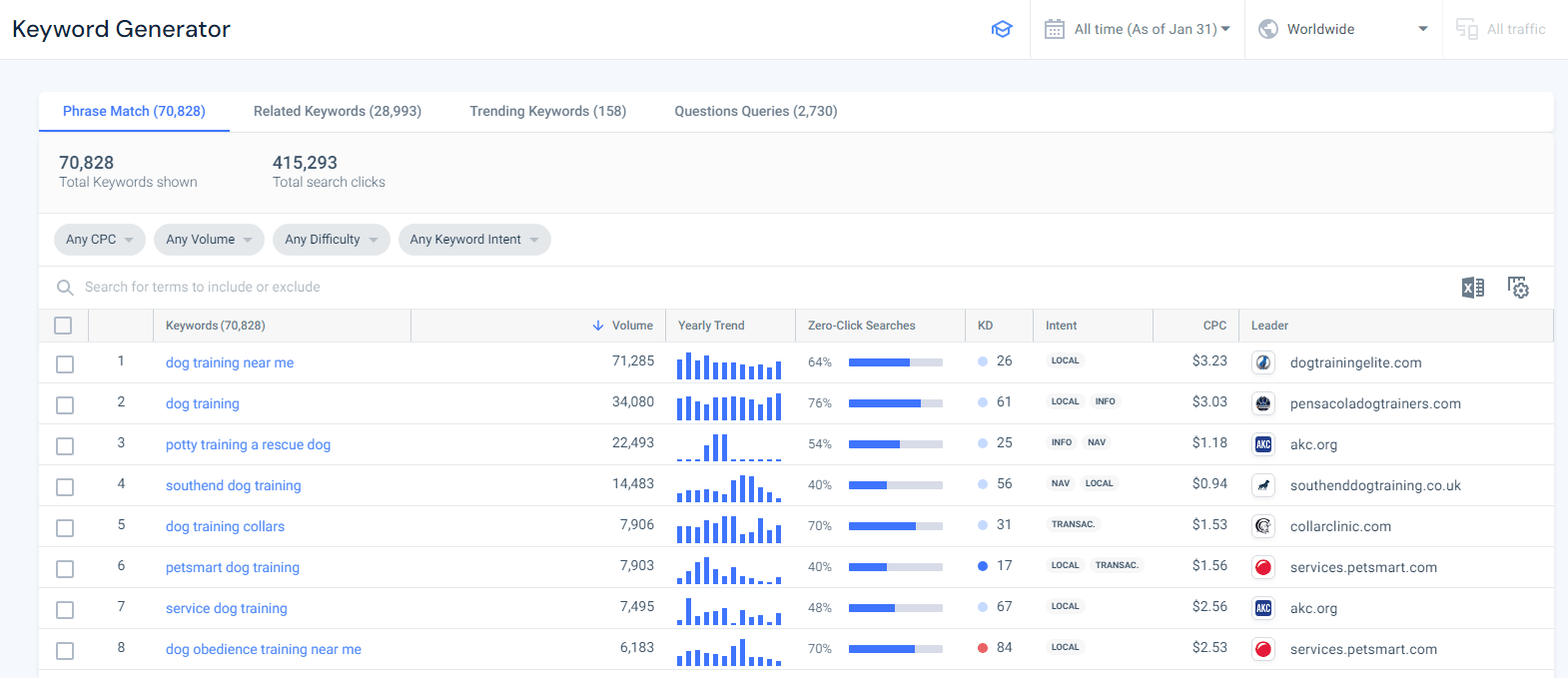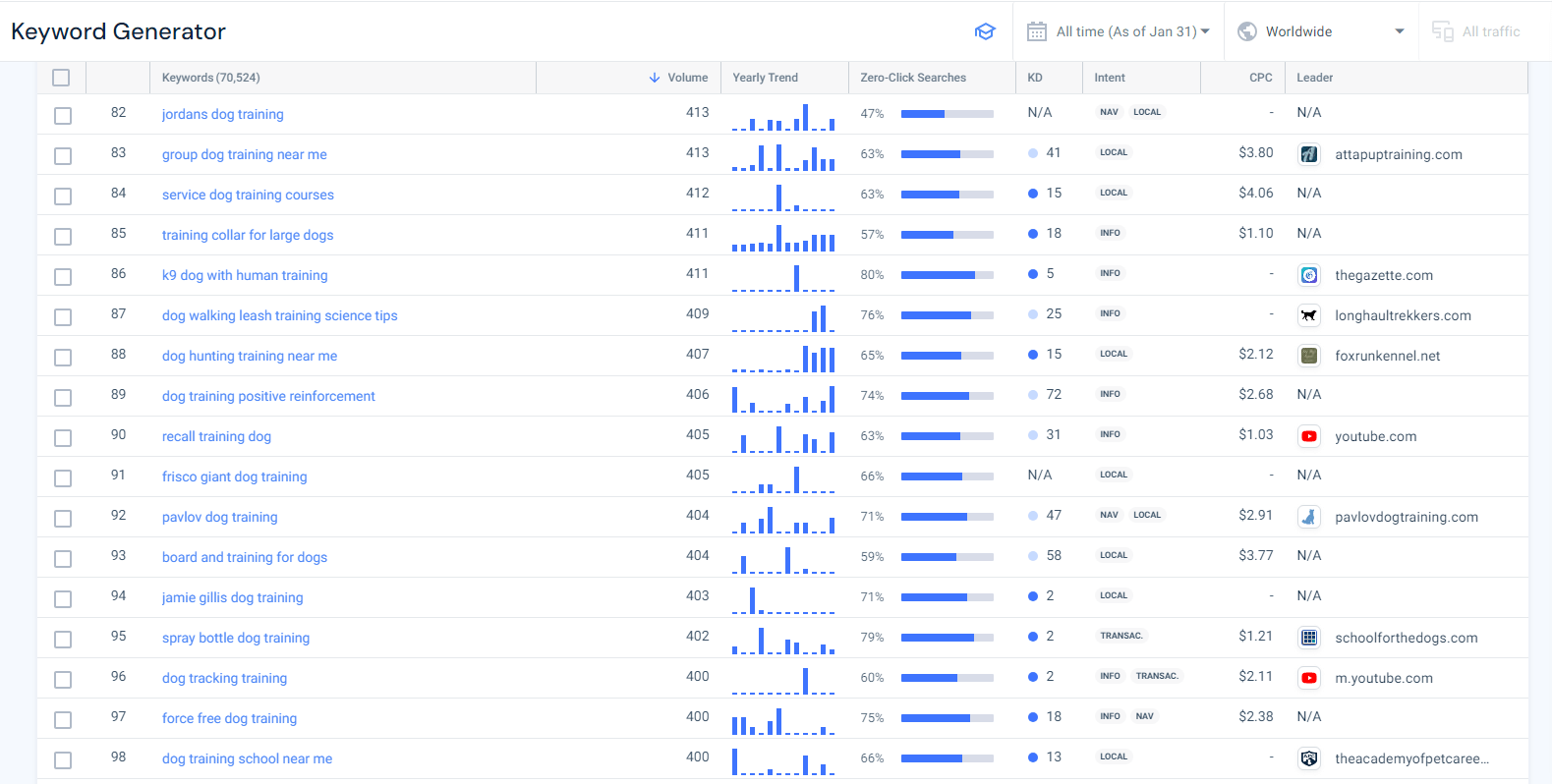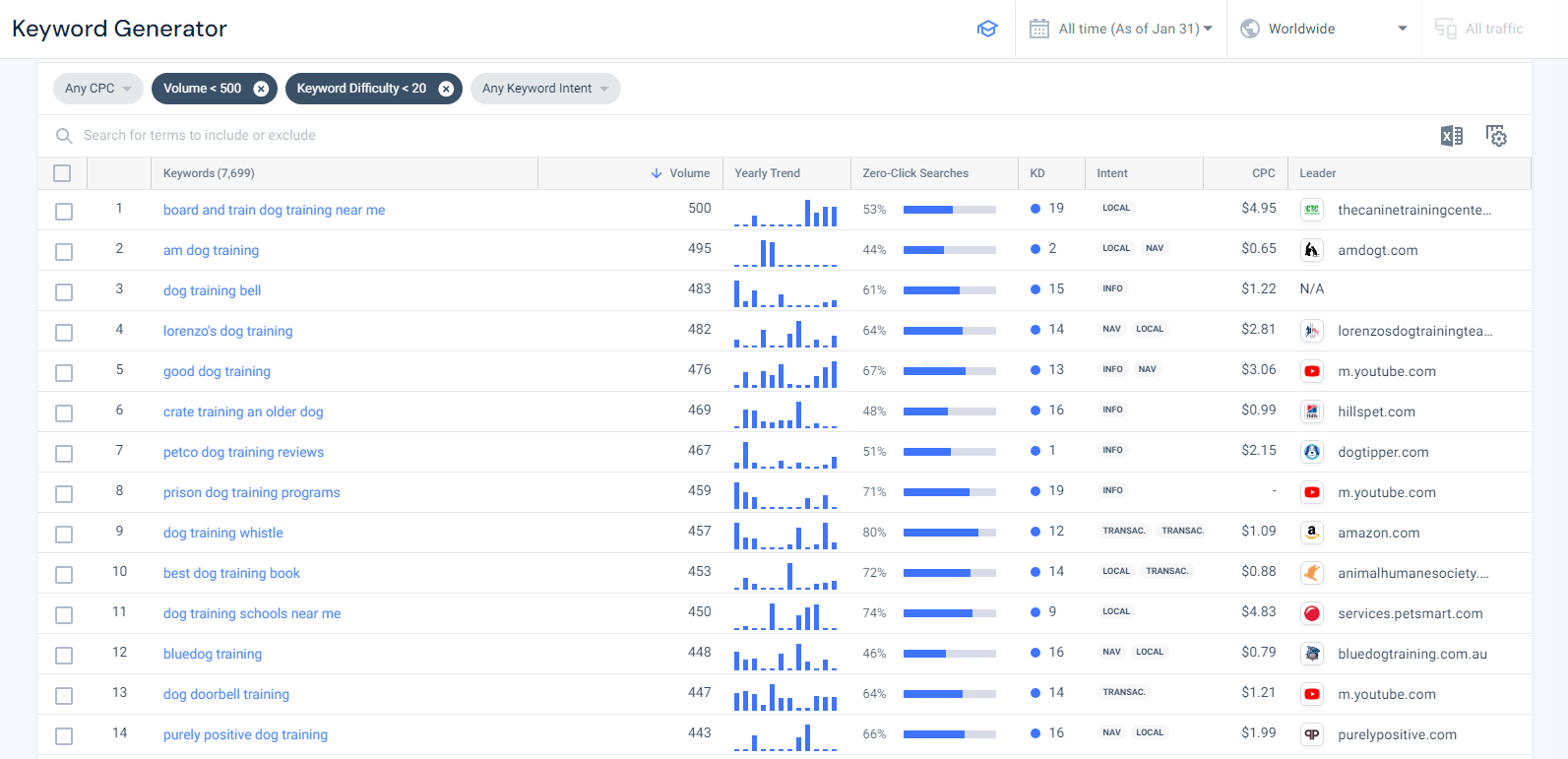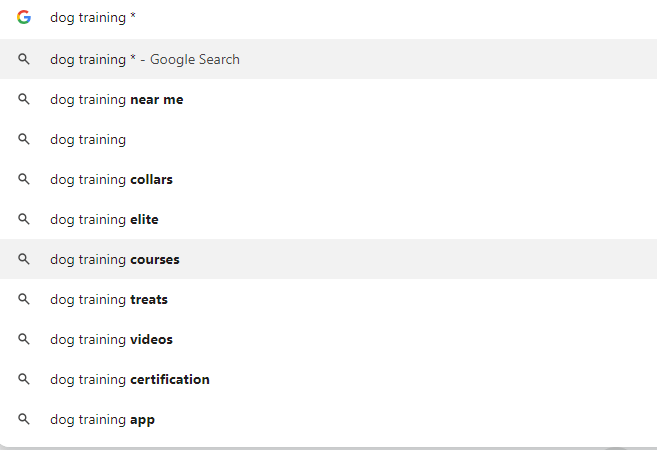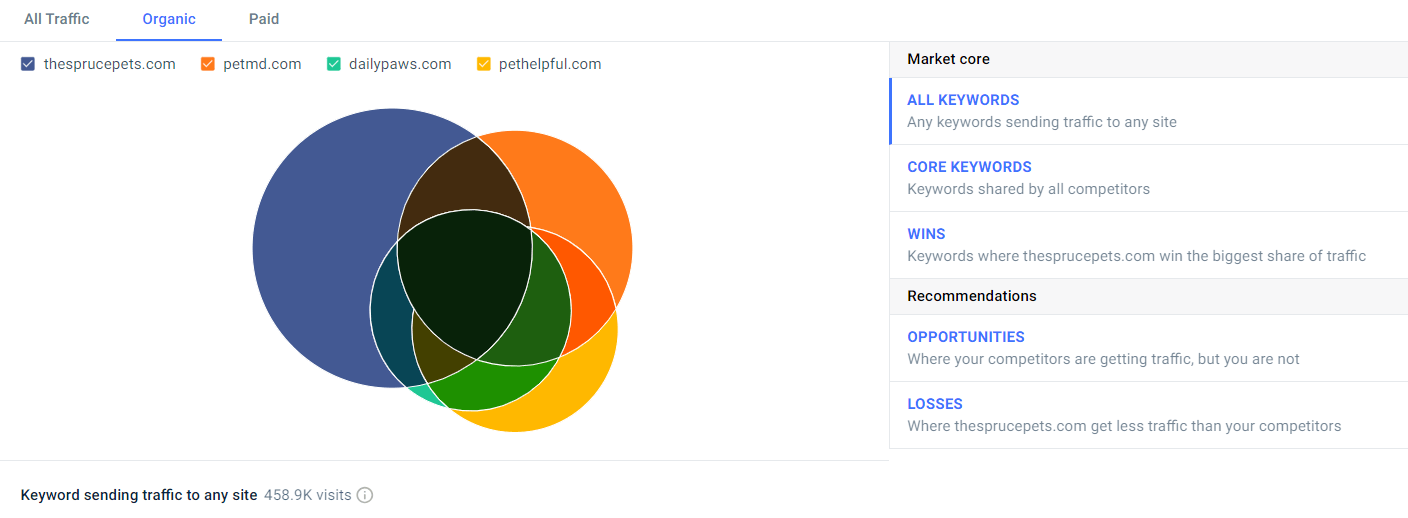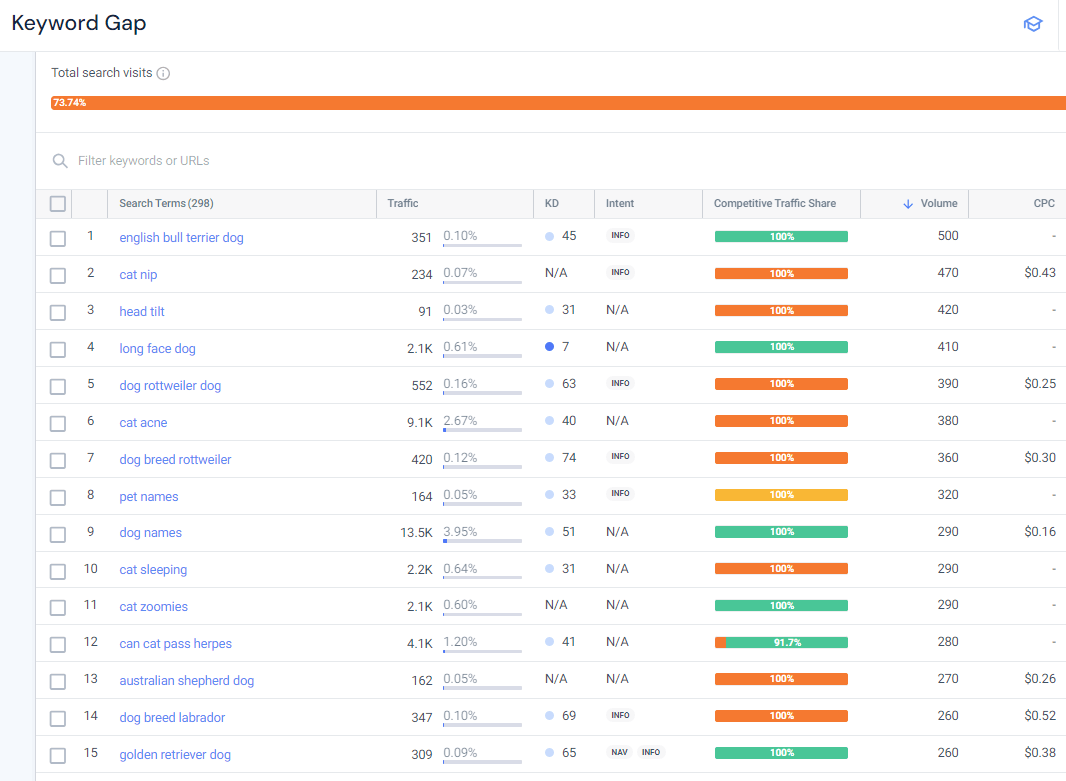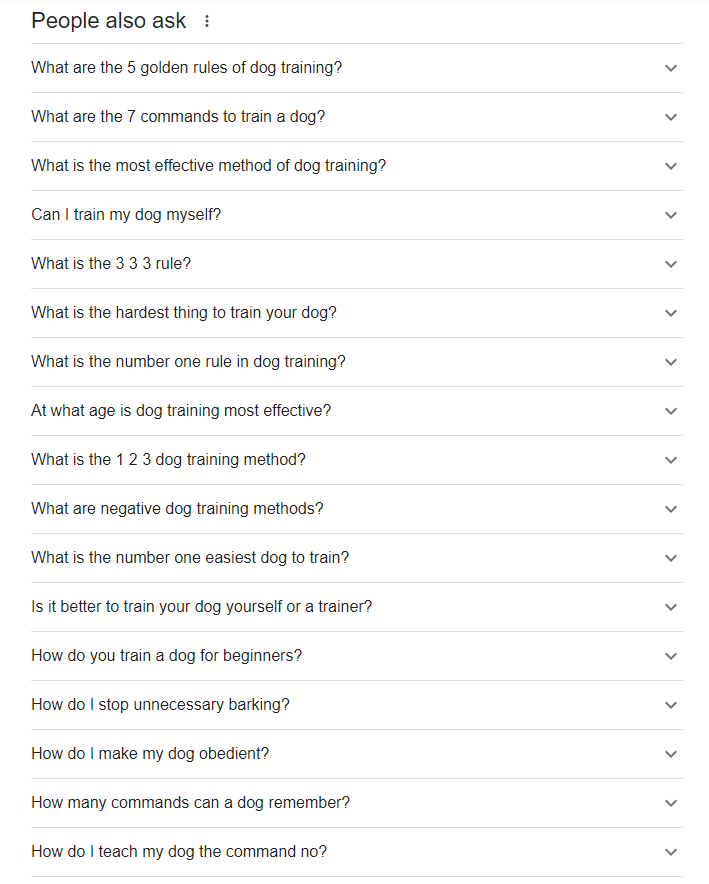Long-Tail Keywords: How To Find & In Them For SEO

Long-tail keywords should be a part of any SEO strategy.
From bringing relevant organic visitors to your site to getting your content to #1 spot on Google search results, long-tail keywords will help you level up.
In this post, we’ll get into what they are, how you can find them, and what you need to implement them to build a winning SEO strategy.
What are long-tail keywords?
Long-tail keywords are search queries that have lower monthly search volumes and tend to be longer and more specific than high-search volume keywords. Although each individual long-tail keyword may have a low search volume, collectively, they make up a significant portion of all online searches, making them highly valuable for your SEO efforts.
Now, you might be wondering why they’re called long-tail keywords. It’s a common misconception that the name is due to the length of the keywords, but, in fact, it’s because they are less popular terms that fall on the tail end of the search demand curve.
Why are long-tail keywords important?
Here are six benefits of using long-tail keywords in your SEO efforts:
1. Ramp up your conversion funnel
The more specific a keyword is, the more likely the searcher is further along the buyer’s journey. Someone searching for a highly specific term like ‘best laptops for students on a budget’ is likely closer to making a purchase than someone searching for a generic term like ‘laptops.’
While broader, higher-volume keywords may drive more overall traffic, the quality and intent of long-tail keyword searches often result in more effective lead generation and sales.
2. Lower competition
Unlike popular, high-volume keywords like ‘shoes’ (which currently gets 764,391 monthly searches), low-search volume long-tail keywords face less competition for the top search engine results. With fewer websites vying for these longer, more specific phrases, it becomes easier to achieve higher rankings, thereby increasing your website’s visibility in relevant searches.
3. More in-depth understanding of user intent
Use long-tail keywords to guide your content creation strategy. By understanding the specific searches your target audience is making, you can create content that directly addresses their needs. Because of the specific nature of this content, it’s more likely to resonate with your audience and establish you as an authority in your field.
4. Increased website traffic
As we mentioned above, individual long-tail keywords may have lower individual search volume collectively but represent a significant portion of all online searches. By strategically incorporating various relevant long-tail keywords, you can reach a wider audience interested in specific aspects of your offerings, leading to an overall increase in website traffic.
5. Support for your pillar content
As SEO has evolved, the focus has shifted from ranking individual keywords to ranking for broader topics. One approach to topical SEO is to create a topical map outlining your pillar content and supporting pieces. Your pillar content targets core terms, which are high-volume, short-tail keywords at the top of the demand curve.
However, ranking for these competitive terms requires supplementing the pillar pages with content that targets middle and long-tail variations. Matching pages with keywords is called “keyword mapping“. The more comprehensive your topical coverage with long-tail content, the higher your topical authority will be on the subject, increasing your chances of ranking higher.
6. Increase your topical authority
Google categorizes websites based on the topics they cover. This allows Google to rank sites with the highest authority for each topic higher in search results. To establish your site as the leading authority in your niche, you should aim to comprehensively answer more user intents than your competitors. By identifying and targeting as many long-tail keywords as possible, you can build your site’s authority and potentially achieve substantial improvements in rankings and organic traffic.
Pro tip: Some professionals avoid tracking as many keywords as possible because they mistake to think they will have to track them all. But targeting doesn’t necessarily mean tracking. read more about tracking the right keywords.
The 2 main types of long-tail keywords
Not all long-tail keywords are created equal. There are two main types: supporting keywords and topical keywords.
1. Supporting keywords
Supporting long-tail keywords fit into a bigger topic. For instance, if you were writing content about dog training, supporting long-tail keywords could be:
- dog aggression training
- training pads for dogs
- dog training harnesses
Since these keywords fit into a broader topic, you can use them to support your rankings for the topic in general. Add them to your blog posts if they fit naturally, or create new pages and add internal links to your head term content.
By doing this you are likely to rank both for the long-tail keywords as well as boosting your rankings for your short-tail head terms.
2. Topical keywords
Topical long-tail keywords are low-volume keywords that don’t fit into a broader topic. If you find topical keywords, we suggest targeting them, especially if your site is new. Due to their low traffic potential, they aren’t that competitive, but you can rank for them on the SERPs with relative ease. If you rank for enough of them, you can generate a significant amount of targeted traffic without many links.
How to find long-tail keywords
1. Use your keyword research tool
Using a keyword research tool is the quickest and most accurate way to find long-tail keywords because, with a few filters, you can find keywords at scale.
One example of a keyword research tool is the Similarweb Keyword Generator.
Let’s say you were trying to rank a short-tail dog training blog post by adding some long-tail supporting content. Instead of trying to imagine how your audience would search for long-tail phrases, just drop your head term (dog training) into the keyword generator. This will give you a massive volume of both short-tail and long-tail keywords to consider for your post.
Using the Similarweb Keyword Generator, we see the core keyword produces 70,828 related keywords, with a mix of both short-tail and long-tail.
As mentioned earlier, long-tail keywords have a lower search volume because they represent highly targeted keyword phrases – because of this, you can quickly find some easy-to-rank-for keywords using the Keyword Volume filter.
Below we set the filter only to show keywords that get between 0 and 500 searches a month, but this can vary depending on your industry.
Another filter (and general metric) to consider is Keyword Difficulty (KD) – this will tell you how competitive a keyword is by analyzing the backlink profiles of the top-ranking results.
Here, we set the Keyword Difficulty (KD) filter to show keywords with low competition.
Now you have a vast number of keywords to create supporting content or add to your short-tail blog post.
You can also use your keyword research tool to find:
- Question queries: which you can use for informational searches and FAQ pages
- Related keywords: have a similar search intent to the seed keyword and can be used to create supporting content for your short-tail content
2. Make the most of Google’s autocomplete
Google’s autocomplete is a great way to find keyword modifiers – how about we stick with our ‘dog training’ example and show you?
There are four ways to find keyword modifiers, including:
- Long-tail keywords: Type your head term into your browser and add any letter of the alphabet (eg. dog training b…)
- Longer-tail keywords: Type your long-tail keyword into your browser and add any letter of the alphabet (eg. dog training books g…)
- Pre-keyword modifier: Type a letter before your head term (eg. a… dog training)
- Google wildcard: Use an asterisk (*) as a wildcard to see a variety of random – but related – keywords to target
3. Find your keyword gaps
Another way to find an almost infinite number of long-tail keywords is through competitor keyword gap analysis.
With a competitive research tool, you can see:
- Which keywords do the top websites in your industry rank for
- Where your site is lacking
- What to target to grow your search market share
Using the Similarweb Keyword Gap tool, let’s take thesprucepets.com and three of its competitors as an example of what you can do with your own SEO competitor analysis.
The color of each circle represents the site, and the size of the circle represents the amount of keywords the site ranks for. The bigger the circle, the more ranking keywords a site has. The overlap of the circles represents where sites rank for the same keywords.
With the Keyword Gap tool, you’ll also find keyword lists that show:
- All keywords: Any of the keywords considered in the visual
- Core keywords: Keywords shared by all competitors
- Wins: Where your site wins the biggest share of traffic for a keyword
- Opportunities: Where your competitors are getting traffic, but you’re not)
- Losses: Where you get less traffic than you competition
The opportunities filter can be particularly interesting, and you can use this keyword data to build a content strategy that allows you to increase your search market share one keyword cluster at a time.
The opportunity keywords suggested for thesprucepets.com, using a lower search volume filter to produce more long-tail keywords.
4. Use Google’s People Also Ask boxes
Google creates People Also Ask boxes by compiling common queries that users ask about a topic. This means, in general, PAA questions are great ways to add topical relevance to your content, and they can be a great source of long-tail keywords.
You can find them on almost any keyword if you type it into your browser.
5. Examine the Google Search Console performance report
Search Console performance report data is powerful. It shows you all of the queries that your content is ranking on, which shows you how Google understands what your content is about. If you see keywords that are irrelevant to your content, you’ve confused Google, and you should rewrite it.
Taking this further, Google might rank your content on relevant keywords that don’t appear in the text itself. This happens more often than you think because Google analyzes the context of your content to determine its meaning. If Google believes your content answers a user query that isn’t explicitly mentioned, you’ll see unexpected queries in the Queries report.
Use this to your advantage.
Carefully review the report, starting from the bottom, with the aim of finding keywords that are tangentially related to your content. Don’t worry if the query is getting relatively few impressions. These tangentially related queries are often long-tail keywords that can be used to increase the relevance of a piece of content. If a particular query doesn’t fit into the content you’re analyzing, consider creating a new piece of content and include an internal link back to the original content.
For instance, in an article about situational awareness exercises, Search Console displays queries like:
- Challenges in achieving situational awareness
- Situational awareness training in the workplace
- Quotes about situational awareness
How to integrate long-tail keywords into your content
As we’ve mentioned before, there are, in essence, two approaches to integrating long-tail keywords into your content:
- Optimize existing content
- Create new content
1. Optimize existing content
As mentioned, adding long-tail keywords to your existing content is likely to improve the relevance of your content – but that’s not the entire story.
Understanding the user intent behind each keyword is vital to your content’s relevance.
This might mean targeting multiple but related user intents in your long-form pieces of content. Be aware that if you do target different intents, you should create a new section in your content and should try to include the query in the header.
For instance, if you were writing a blog post that answers the query ‘dog obedience training,’ you can add sections that answer long tail keywords like:
- stop dog from jumping on people
- teach dog not to bark excessively
- leash training for dogs
- housebreaking a new puppy
- how to stop dog from chewing furniture
- puppy socialization and obedience training
Since each of these keywords represents a user question that needs to be answered, you should include the query in a header and answer that query in the body text.
2. Create new content
New long-tail keyword content that you create should ideally be used to support your short-tail or pillar content, meaning – when you plan this content – you need to think about your content hierarchy.
Ask yourself:
- What topical cluster is this page supporting?
- Where does this content fit on your topical map?
This is important as you should already be planning your internal links and site architecture. The best way to do this is to mention these long-tail keywords in your pillar content briefly and then link out to the long-tail, more specified content.
Not only does this give readers the option to click through to find out more about a topic, but it will show search engines that these pages are related. You should also include a link from your long-tail pages back to your pillar page.
The best keyword data for the best SEO strategy
The key to finding the right long-tail keywords is to have the right keyword data. A high-quality keyword research tool will help you find a large volume of keywords that:
- Covers every aspect of your topic
- Brings your site traffic
Similarweb’s Search 3.0 keyword data combines real-user metrics with powerful SERP data to provide insight into keyword performance (including zero-click searches), allowing you to target the right keywords for the right audience.
FAQs
What are long-tail keywords?
Long-tail keywords are terms that have a lower search volume and are less competitive. For example, a short-tail keyword is ‘travel deals’, and the long-tail keyword would be ‘summer travel deals in LA’.
Why use long-tail keywords for SEO?
Even though long-tail keywords have low search volumes, they allow you to focus on the keywords that bring in high-quality traffic.
How do I choose long-tail keywords?
You can choose long-tail keywords with SEO tools. Similarweb’s keyword generator tool will collate a list of long-tail keyword suggestions specific to your strategy.
The #1 keyword research tool
Give it a try or talk to our marketing team — don’t worry, it’s free!

